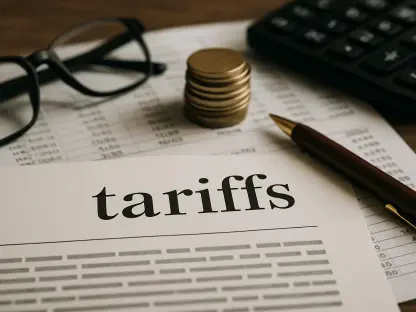In a rapidly shifting financial landscape where stability becomes increasingly rare, Japan’s 10-year government bonds (JGBs) have emerged as a compelling option for investors seeking refuge from unpredictable yields. The recent auction significantly highlighted this growing investor sentiment, recording an impressive bid-to-cover ratio of 3.51x, which surpasses the 12-month average of 3.14x. This robust demand primarily stems from long-term institutional investors who prioritize safety and predictability in their portfolios. Amidst global economic uncertainties where yield fluctuations are common, the comparative stability offered by JGBs presents a stark contrast to the turbulent nature of U.S. Treasuries. The latter are currently associated with heightened geopolitical risks and the ambiguous policy directions of the Federal Reserve. The allure of the JGBs is strongly supported by the Bank of Japan’s (BOJ) consistent yield curve control policy and its strategic approach toward tapering bond purchases, making them a key asset in the eyes of financial institutions aiming to secure predictable outcomes amid global economic turbulence.
Stability and Yield Attraction of JGBs
The attractiveness of JGBs lies in their inherent stability, a quality that has become increasingly appealing to investors at a time marked by the volatility of global markets. Unlike U.S. Treasuries, which face considerable uncertainty due to ongoing geopolitical tensions and ambiguous Federal Reserve policies, JGBs are perceived as stable anchors thanks to the meticulous management by the BOJ. This includes a controlled approach to the yield curve and carefully measured tapering of bond purchasing. Such measures ensure that JGBs are viewed as capital preservation vehicles with a predictable yield landscape. For risk-averse investors or those looking to diversify their fixed-income portfolios, JGBs stand out as a reliable choice amid market fluctuations. The consistency and relatively low risk associated with them align with the strategic objectives of many long-term investors, who are keenly aware of the perils associated with erratic market trends and geopolitical uncertainties that skew risk assessments.
Moreover, institutional investors are drawn to JGBs due to their role as a hedge against potential future instabilities in the financial markets. By incorporating JGBs into their investment strategies, these investors can achieve a better balance and hedge against more volatile assets. The meticulous interest in these bonds underscores Japan’s reputation for maintaining financial prudence and navigating economic storms with resilience. The strategic significance of investing in JGBs lies not only in seeking returns but also in ensuring portfolio robustness against market shocks. As global economic conditions continue to fluctuate, this stability offered by JGBs serves as a counterbalance, making them an essential consideration for any institution aiming to weather financial uncertainties with stable and reliable instruments.
Diversification and Strategic Allocation
The global demand for safe assets has been steadily growing, further cementing the status of JGBs as a preferred investment option for those seeking to safeguard their portfolios. This trend highlights the broader geopolitical and economic anxieties that have driven investors to reprioritize their strategies in favor of risk mitigation. By strategically allocating JGBs alongside U.S. Treasuries, investors can diversify their portfolios effectively while balancing the contrasting risk profiles inherent in different regional markets. U.S. Treasuries might offer higher yields but come with significant risks that can be problematic for conservative investors. In contrast, JGBs counterbalance this with their consistent performance and low-risk profile, allowing for a more stable investment framework.
Nonetheless, potential challenges remain. The BOJ’s future policy directions, particularly regarding normalization, and currency fluctuations could impact the allure of JGBs. However, given the consistent global need for safe assets, such challenges are effectively mitigated. With meticulous risk assessments and strategic planning, investors can leverage JGBs to enhance portfolio resilience and stability. As geopolitics continue to play a critical role in the economic arena, the importance of diversifying and evaluating asset allocation strategies cannot be overstated. JGBs, therefore, play a pivotal role in offering a tactical edge to those aiming to safeguard their investments against unforeseen global developments.
Navigating Uncertain Economic Landscapes
In today’s financial world, where stability is increasingly hard to find, Japan’s 10-year government bonds (JGBs) are becoming increasingly attractive to investors looking for reliable returns amidst fluctuating yields. The latest auction underscored this trend, boasting an impressive bid-to-cover ratio of 3.51x, well above the annual average of 3.14x. This strong demand largely comes from long-term institutional investors who place a high value on the safety and predictability JGBs offer. In a global market fraught with uncertainties and where yield variances are prevalent, JGBs stand out in stark contrast to the volatile U.S. Treasuries. The latter are currently marred by geopolitical tensions and uncertain Federal Reserve policies. JGBs are bolstered by the Bank of Japan’s steadfast yield curve control strategy and its careful approach to tapering bond purchases, cementing their role as essential assets for institutions seeking predictable financial results in uncertain economic times.









